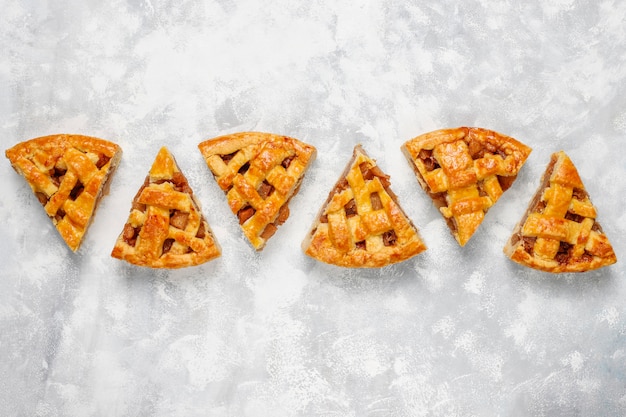What Is Gluten?
Gluten is the main storage protein found in wheat grains. It consists of hundreds of different proteins, primarily gliadin and glutenin. You can also find gluten in other grains like rye, barley, and spelt.
What Is a Gluten-Free Diet?
A gluten-free diet involves consuming foods and drinks that do not contain wheat-related proteins, specifically gluten. Some people choose to eliminate all carbohydrates when adopting a gluten-free diet since many carb-rich foods are made with wheat, barley, or rye. For individuals with celiac disease, following a gluten-free diet is essential to alleviate symptoms of gluten intolerance. Prolonged exposure to gluten in people with celiac disease can lead to more severe symptoms or other health issues.
Adopting a gluten-free diet can lead to health benefits such as weight loss, increased energy, and overall wellness. Consequently, many people without medical reasons to avoid gluten also start eating gluten-free foods.
First Steps to Going Gluten-Free
Deciding to go gluten-free isn’t as simple as just starting a new diet. It can be challenging to give up those delicious bread rolls at restaurants. Learning to read food labels, including those on supplements and vitamins, can feel overwhelming at first, but people quickly adapt, and the benefits are worth it. Some individuals start with a vegetarian or vegan diet to ease into a stricter gluten-free lifestyle. Here are some steps to help you begin your gluten-free journey:
Consult your healthcare provider to ensure this diet is right for you. Get excited about going gluten-free, whether it’s voluntary or mandatory, by visualizing the benefits. Start a list of delicious gluten-free groceries and look up tasty gluten-free recipes. Go through your pantry, fridge, medicine cabinet, and toiletries to check labels for gluten-related ingredients. Dispose of or give away items that aren’t gluten-free. If you live with others who aren’t avoiding gluten, create a separate space for your new lifestyle. Replace food items, supplements, and vitamins with healthy, gluten-free substitutes. Find fellow gluten-free dieters for ongoing support, discussion, and diet ideas. Online support groups can be a great resource. Finally, start enjoying your new, gluten-free life.
What Should You Eat on a Gluten-Free Diet?
Many people think a gluten-free diet means limited or unpleasant food options. However, with today’s gluten-free substitutes, anyone can enjoy a nutrient-rich, satisfying meal. Here are some common items to add to your gluten-free foods list:
Fresh fruits and vegetables, meat, fish, poultry, eggs, beans, nuts, seeds, dairy products, quinoa, amaranth, buckwheat, cornmeal, millet, rice, and oats. Although oats were once thought to be problematic for those with gluten intolerance, they contain a protein called avenin, which is non-toxic and well-tolerated by people with celiac disease. However, oats may come into contact with wheat, barley, or rye during manufacturing, so check labels for cross-contamination.
You can also buy gluten-free versions of foods like bread, flour, crackers, and cereals made with rice and other gluten-free flours. Keep in mind that these processed foods may be higher in sugar and calories and lower in fiber than their gluten-containing counterparts. They can also be more expensive.
Which Foods and Ingredients Contain Gluten?
Enjoying a varied diet without gluten is possible. Knowing which foods contain gluten can help you plan your meals at home or order at restaurants. Some food products and restaurants offer gluten-free substitutes or meals, often labeled as “gluten-free.” If you’re unsure, look for these ingredients or ask your server if your meal contains them:
Wheat, barley (including malt, malt flavoring, and malt vinegar), rye, triticale (a cross between wheat and rye), bulgur, couscous, durum flour, farina, graham flour, kamut, semolina, and spelt. Foods that typically contain gluten and should be avoided unless there’s a gluten-free substitute include beer, bread, crackers, flour, croutons, pasta, cereal products, stuffings and dressings, cakes, cookies, and other baked goods.
Other foods that may contain gluten include candy, licorice, marinades, soy sauce, energy bars, salad dressing, teriyaki sauce, brown rice syrup, sauces and gravy, thickeners (roux), imitation seafood, imitation meat, processed lunch meat, soup bases, broth, bouillon, panko (Japanese breadcrumbs), seasoned rice mixes, breading and coating mixes, and self-basting poultry.
Are Medicines, Vitamins, and Supplements Gluten-Free?
Gluten is a protein found in many things, including over-the-counter medication, herbal and nutritional supplements, vitamin and mineral supplements, and even communion wafers. Ask your healthcare provider if your medication contains gluten, and check labels on supplements to ensure they are made with high-quality natural ingredients that don’t include gluten.
Is a Gluten-Free Diet Healthy?
A healthy, gluten-free diet encourages a higher intake of fruits, vegetables, and other healthier food choices to make up for any nutrition lost from wheat proteins. Going gluten-free is necessary for people with gluten intolerance issues such as celiac disease and non-celiac gluten sensitivity. Over time, people with celiac disease who follow a gluten-free diet see a significant reduction in symptoms or experience no symptoms at all. For many, the damage done to the intestines by celiac disease is eventually repaired after following a gluten-free diet.
The rise in popularity of going gluten-free has led to the development of healthier and more nutritional substitutions. A diet rich in fruits, vegetables, and other healthy foods encourages better digestion and a healthier gastrointestinal tract. Although humans only started eating wheat about 10,000 years ago, scientists speculate that it may be harder for the body to digest and absorb. However, there are bacteria in the mouth that help digest gluten. Nonetheless, a gluten-rich diet has been linked to poor digestion.
Gluten can also cause degradation to the thyroid with continued use and affect the brain, which is one reason avoiding gluten has been linked to a reduction in headaches. Sticking to a plant-based, gluten-free diet that provides the proper nutrients may help support overall health.
Gluten Intolerance: Celiac Disease, NCGS, & Wheat Allergy
Celiac disease, non-celiac gluten sensitivity (NCGS), and wheat allergies are all conditions resulting from gluten intolerance and are often confused as the same condition. They can all be managed by adopting a gluten-free diet.
Celiac Disease
Celiac disease (CD) is an autoimmune disorder. People with CD are genetically predisposed to this condition, which is triggered by gluten consumption and specific stress-related factors like trauma and surgery. When people with celiac disease eat gluten, the cells lining the small intestine flatten, reducing their ability to absorb nutrients. Celiac disease can also manifest on the skin as blisters or a rash called dermatitis herpetiformis. The only way to alleviate celiac disease is to completely eliminate gluten from the diet.
Non-Celiac Gluten Sensitivity
Non-celiac gluten sensitivity (NCGS), also known as gluten sensitivity, is similar to celiac disease but is not classified as an immune or autoimmune condition. It does not adversely affect the intestine, cause skin issues, or have a genetic component. Therefore, if these factors are not present, it is unlikely that celiac disease is causing your gluten sensitivity. It is difficult to determine if gluten is causing a reaction in people with NCGS or another element since gluten-containing grains are made up of several different components. There are no tests currently available to identify NCGS, except by avoiding gluten in the diet. If symptoms subside, it is then safe to assume that you are sensitive to gluten.
Wheat Allergy
A wheat allergy is an immune response to one or more of the several hundred protein strains found in wheat. The symptoms of a wheat allergy are similar to those of celiac disease and NCGS. However, a wheat allergy is the only one of the three conditions that can result in anaphylactic shock, often requiring the immediate administration of epinephrine. People with a wheat allergy do not necessarily have a gluten intolerance and may continue to enjoy gluten-rich foods as long as they don’t contain wheat. They do, however, need to follow a wheat-free diet and may benefit from avoiding other allergy-prone foods.
Gluten-Free Diet Benefits
Many people who switch to a gluten-free diet, whether they are gluten-intolerant or not, experience several health benefits. Weight loss is one of the claims linked to avoiding gluten, although there’s no direct evidence to support this. Many testimonials, however, state that weight loss was experienced after switching to a gluten-free diet, possibly due to consuming fewer carbohydrates. Some people with celiac disease gain weight as their symptoms improve. Other benefits associated with a gluten-free diet include a better mood, more energy, and a reduction in headaches.
Are There Any Risks or Side-Effects of a Gluten-Free Diet?
While there are several benefits to a gluten-free diet, there are some considerations to keep in mind:
A lower intake of fiber may increase the chances of constipation. More rice consumption can lead to greater exposure to toxic chemicals. There is an increased risk of nutritional deficiencies. Gluten-free foods may have a higher cost.



